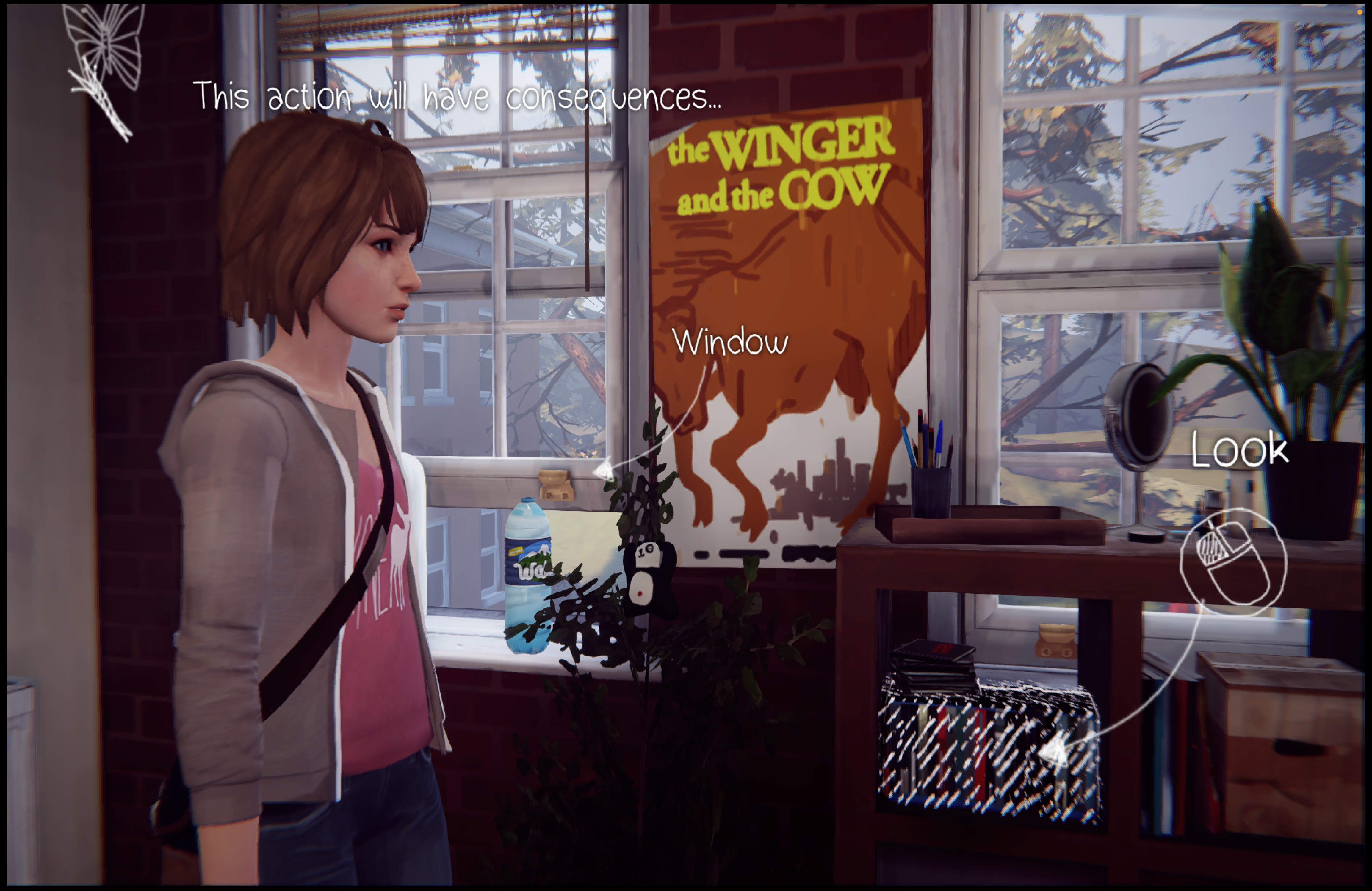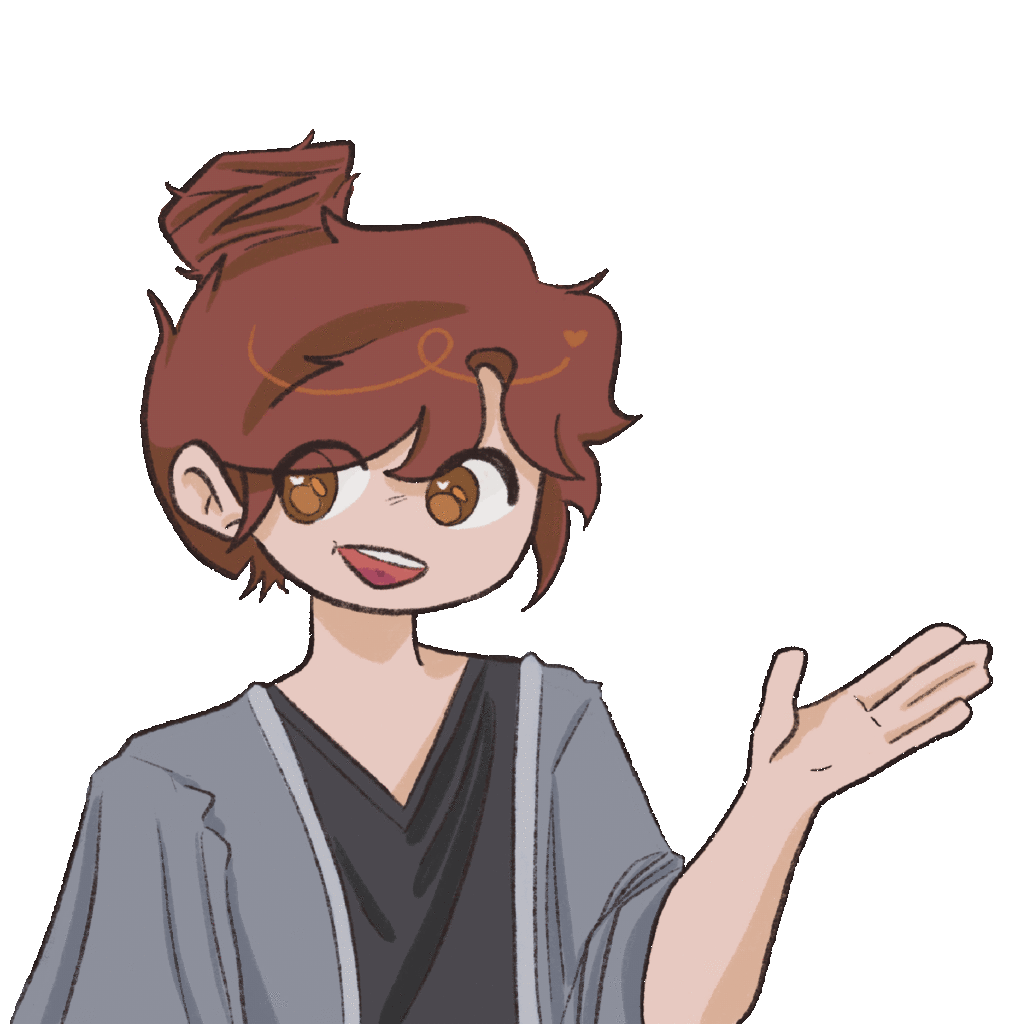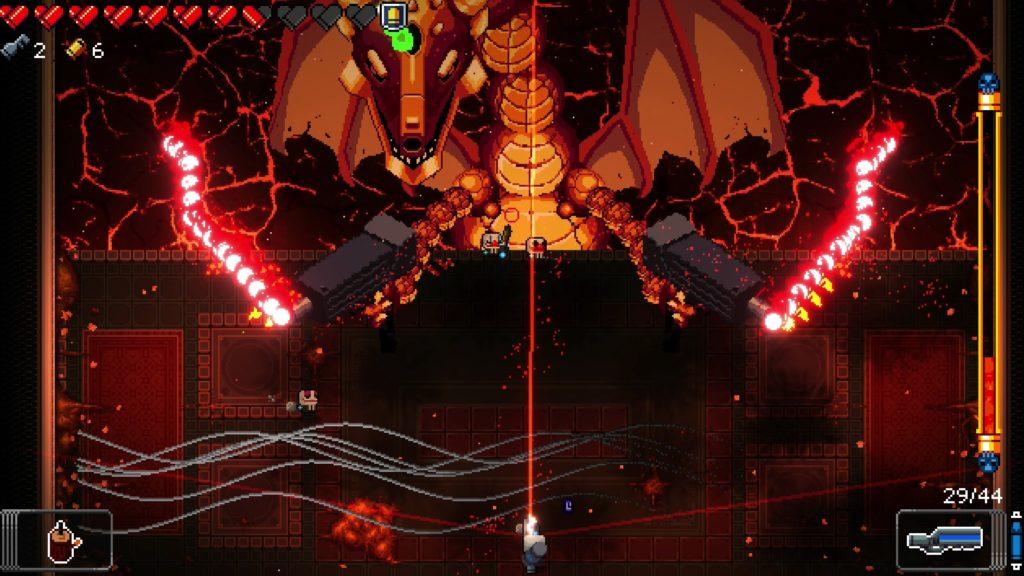I played “Life is Strange” earlier today on PC and was able to get to Chloe’s room.
“Life is Strange” is available on a wide range of platforms, including console, iOS, android, and PC. The game was also developed by Dontnod Entertainment and is published by Square Enix. The target audience of “Life is Strange” seems to be young adults, as the game is set in a school and covers topics such as drugs, bullying, and teen pregnancy. The game may be too violent or graphic for younger audiences, however.

[ Intro page that explained the premise]
“Life is Strange” is a choice-based adventure game where Max, a student of Blackwell, discovers that she can rewind time. The story revolves around a missing student, Rachel Amber, alongside her childhood friend, Chloe. Life is Strange creates a compelling mystery through the enacting mechanic of choice making, and a network of embedded narratives within its setting. The story creates loops through the time rewinding mechanic and follows a clear overarching arc as Max’s journey progresses, relationships develop, and the mystery is unveiled.

[ System reported actions will have consequences after watering plant ]
At the core of the enacting narrative is the player’s ability to make choices that have significant repercussions on the story. These decisions range from seemingly mundane interactions to pivotal moments that can alter the trajectory of the plot. For example, one of the first choices the player makes in the game is to tell the principal about Nathan Prescott or to hide the truth – which is a major decision. Small actions also affect the game. In my playthrough, the even simple act of watering a plant was recorded by the game and reported to have consequences. Every choice made by the player in “Life is Strange” ripples through the narrative, leading to a multitude of branching paths and alternate outcomes. This encourages players to not only engage with the pre-programmed narratives, but also explore to remain well informed as decisions come up.
The time rewinding mechanic also adds another layer to the enacting narrative by allowing players to experiment with different choices and explore alternate timelines. By rewinding times, players experience loops within the narrative, exploring different outcomes and consequences of their choices. These loops add an extra depth to the story and contribute to the sense of agency and discovery, as players are able to navigate through various timelines (and even choose timelines) to uncover clues and progress in the mystery. Players can witness the immediate consequences of their actions and make more informed decisions by setting back time. As the player navigates through the twists and turns of the narrative, they are prompted to reflect on their choices and consider the ethical implications of their actions. This reflective aspect of the enacting narrative encourages players to also think through the game’s themes of consequences and personal responsibility. There are times when Max will even think out loud, regretting the choices we as the player chose. For example, as Max approaches the parking lot, she overhears the security guard bullying Kate. The player has the option to take a picture or to intervene. At first, I chose to take a picture and observe, taking a toll on Max’s relationship with Kate. After this encounter Max mentions that she wished she had stopped them instead, which alludes to the player that they can choose to time rewind and take the more moral and ethical option. If players chooses this, they become more of an enemy to the guard.

[ Mechanic of interacting with the setting ]
Furthermore, Life is Strange utilizes emedded narratives that develops the characters and overarching narrative within the world. The embedded mechanic of observing and interacting with Max’s surroundings plays a crucial role in developing both the narrative and characters within the world. This mechanic allows players to delve deeper into the lives of each character, uncovering motivations, relationships, and secrets enhancing the story’s mystery. One notable instance of this embedded action is when Max gains access to her classmate’s dorm room, such as Dana’s room. This opportunity offers players a glimpse into the private lives of the characters, providing insights into their personalities and background. By examining the various objects, photos, and personal belongings in each room, platers can piece together stories of each character, discovering hidden details and clues that contribute to the main mystery. In Dana’s room, we discover that Dana was pregnant and we are able to use these clues to talk to Dana. In Victoria’s room, we learn that she did not like the missing person, Rachel. Additionally, Max’s journal serves as a repository of information about her classmates, including characters like Victoria and Nathan. These journal entries are provide embedded context and offers additional clues.




